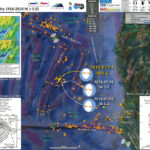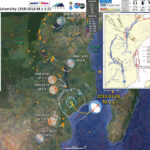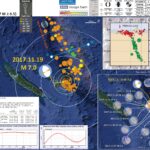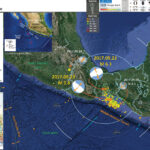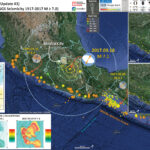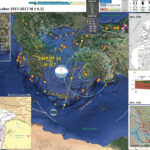What a day. I started by waking up about 5:43 AM (about, heheh), which was 17 minutes before my alarm was set. I had a job interview at 8:30. I went to the interview for a position working on tsunami…
Earthquake Report: Blanco fracture zone
Well, so exciting to have more earthquakes to write about! This summer has been a low seismic summer. The entire year actually. There was an earthquake within the Gorda plate a few days ago, but these M 5.3 and M…
#Earthquake Report: Gorda plate
Over the past night and morning, there was a sequence of earthquakes within the Gorda plate due west of Crescent City. Some people even felt these earthquakes, culminating (so far) with a M 5.6. There was a Gorda plate earthquake…
Earthquake Report: Malawi & Mozambique
Busy day today. This is my second earthquake report today. This report is about a M 5.6 earthquake along the Malawi Rift (MR) system, part of the larger East Africa Rift (EAR) extensional plate boundary. The EAR is currently the…
Earthquake Report: Loyalty Islands Update #1
I just got back from one of the best conferences that I have ever attended, PATA Days 2017 (Paleoseismology, Active Tectonics, and Archeoseismology). This conference was held in Blenheim, New Zealand and was planned to commemorate the 300 year anniversary…
#Earthquake Report: Loyalty Islands
BOO! Happy Halloween/Samhain…. I am on the road and worked on this report while on layovers with intermittent internets access… Though this earthquake sequence spanned a day or so, so it is good that it took me a while to…
Earthquake Report: Chiapas Earthquake Update #2
Well, we had a really interesting earthquake today. There was a M 6.1 earthquake in the North America plate (NAP) to the north of the sequence offshore of Chiapas, with the M 8.1 mainshock. Here is the USGS website for…
Earthquake Report: Puebla, Mexico Update #1
Well, the responses of people who are in the midst of a deadly disaster have been inspiring, bringing tears to my eyes often. Watching people searching and helping find survivors. This deadly earthquake brings pause to all who are paying…
Earthquake Report: Bear Lake fault, Idaho
We are still having a series of earthquakes in southeastern Idaho. This earthquake appears related to the Bear Valley fault (BVF) system, which is a normal fault system related to extension in the Basin and Range geomorphic province. Here is…
Earthquake Report: Turkey
We just had a good shaker in western Turkey. At the moment, there are over 400 reports of ground shaking to the USGS “Did you Feel It?” web page. The USGS PAGER report estimates that there may be some casualties…


